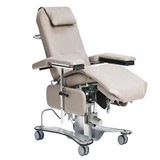These findings are featured as the latest core article in the prestigious scientific journal, SMALL.
The research team behind the findings are with UOW’s Intelligent Polymer Research Institute (IPRI) which is the lead partner in the ARC Centre of Excellence for Electromaterials Science (ACES). ACES has established a world leading facility in biofabrication at UOW’s Innovation Campus.
IPRI Director and Executive Research Director of ACES, Professor Gordon Wallace, said these sorts of bionic devices enable researchers to interface the world of biology with the world of electronics.
"Developments in this area to date have resulted in the cochlear implant (the bionic ear), nerve stimulators for control of Parkinson’s disease and deep brain stimulators for epilepsy.
"Ongoing advances in materials (especially in the area of organic conductors) and fabrication methods are bringing the pursuit of regenerative bionic devices for nerve and muscle repair closer to realisation.
"In terms of fabrication the development of 2D and 3D printing technologies is a revolutionary new approach to the development of bionic devices," Professor Wallace said.
It is in light of this that SMALL is reporting for the first time development of an ink formulation, amenable to ink jet printing and capable of providing pattered surfaces (with micron resolution) capable of supporting nerve cell growth and controlling the direction of growth through electrical stimulation.
















